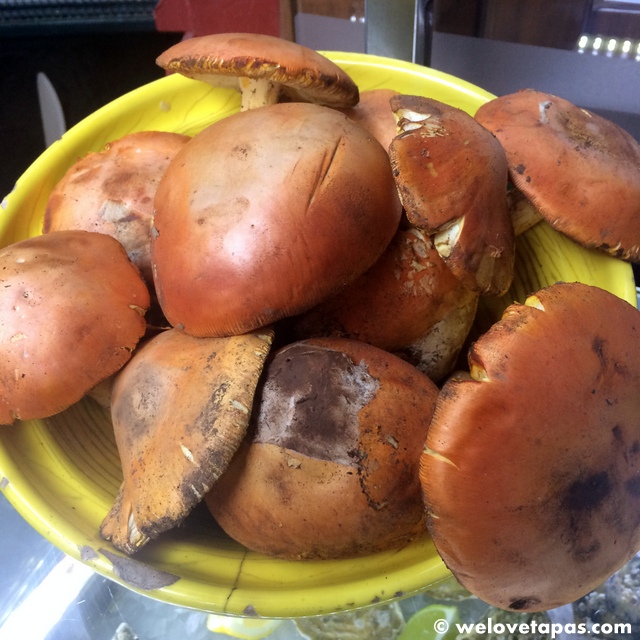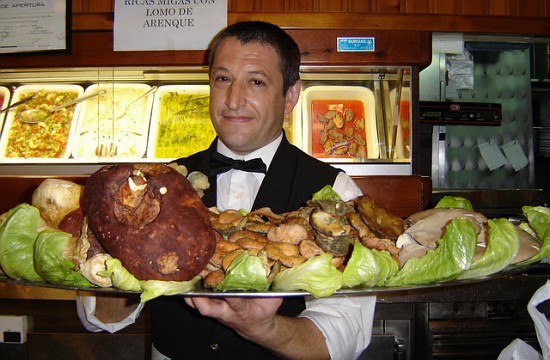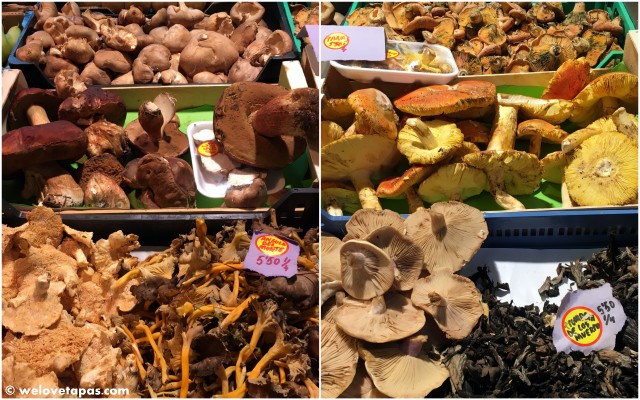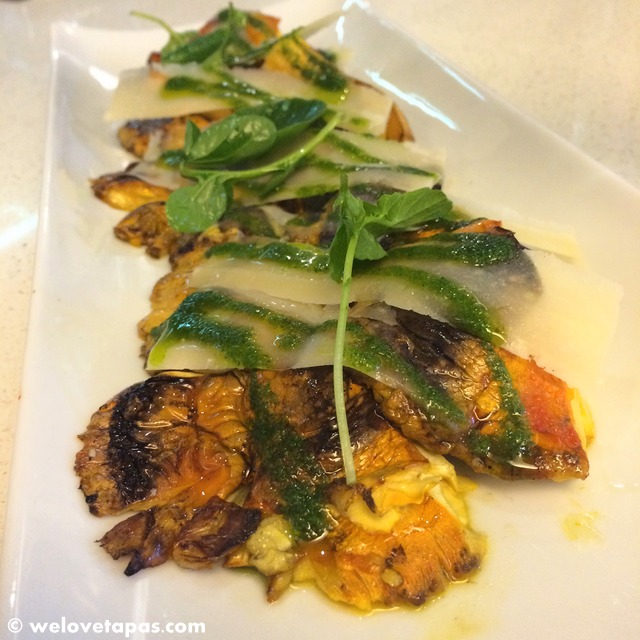 amanitas cesáreas
amanitas cesáreas
Autumn is here, even in Spain, and among the things this season brings with it are wild mushrooms. Country people have always gathered mushrooms for the pot at this time of year, but in Spain in recent decades harvesting mushrooms has become a popular weekend pastime, taking advantage of the temperate weather to get out and about in the woods and fields. It goes without saying, of course, that you should only do this if you are, or are with, an expert in the identification of mushrooms, as although there are only about 50 toxic species out of more than 2,000, half a dozen of these are deadly, and some are easily mistaken for those tasty specimens you’re looking for.
 seasonal mushroom selection at Restaurante Modesto
seasonal mushroom selection at Restaurante Modesto
Although in the English language the term mushrooms is reserved for edible varieties, the rest being usually described as toadstools, they are all fungi, neither animal nor plant, but an entire separate kingdom of organisms, of which the visible mushroom or toadstool is only the fruiting body of a network of filaments that draw their sustenance from living or decaying matter. Remarkably, some of the largest living creatures on earth are actually fungi.
 wild mushrooms at Mercado de la Encarnación
wild mushrooms at Mercado de la Encarnación
Many mushrooms are grown commercially, and are available all year round, but in the autumn a wide variety of wild mushrooms, broadly known as setas in Spanish, though this word is also used for certain specific varieties, too (the common, mainly commercially produced button mushrooms are champiñones), make their appearance in bars, restaurants and markets. Each of them has its own distinct taste and texture, and its own preferred uses.
 grilled amanitas cesáreas with pesto and parmesan at La Azotea
grilled amanitas cesáreas with pesto and parmesan at La Azotea
Boletus (also known as porcini) is one of the most prized. It has a large brown cap that can grow up to 35cm in diameter, though smaller ones are preferred. It has a meaty taste and creamy texture. Most used in soups, pastas and risotto, and is also great in croquettes.
Amanitas cesáreas (Caesar’s mushroom) was a favourite of the Roman emperors. It has a distinctive orange cap and yellow gills and a delicate texture.
Setas, or oyster mushrooms, come in a variety of species, all wide, flat gilled mushrooms, often without a stem. They are normally torn or broken up rather than sliced, and are particularly good for stir fry or sauté.
Níscalo, also known as saffron milk-cap or red pine because of its colour, is often fried whole with garlic and parsley.
Gurumelo is one of the most prized of all wild mushrooms, and is unique to southwestern Spain. Claimed to improve almost any dish, it can be braised, or added to stews or omelettes.